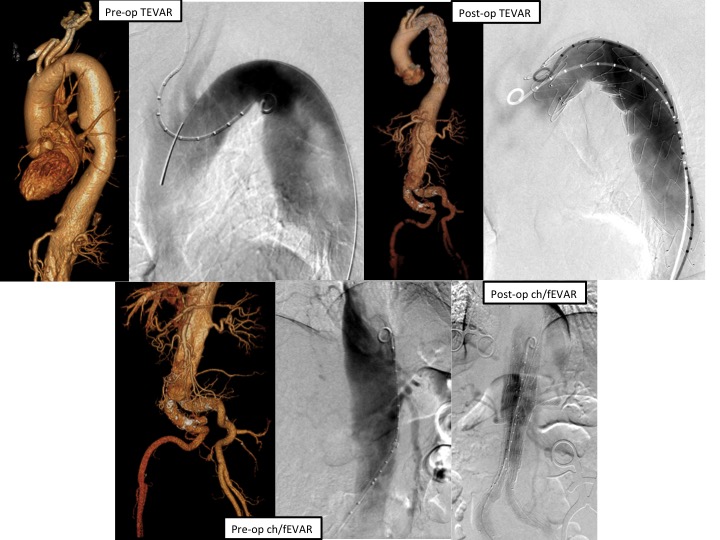Staged Endovascular Approach to a Type II Thoracoabdominal Aortic Aneurysm
Kira N. Long, MD, Robert Steppacher, MD, Ross Milner, MD, Trissa Babrowski, MD.
University of Chicago, Chicago, IL, USA.
OBJECTIVE - Thoracoabdominal aortic aneurysms (TAAA) in an aging patient population pose a unique challenge to vascular surgeons, particularly when patientsí comorbidities prohibit traditional open repair. Thirty-day mortality rates for elective repairs are around 5% with increasing age a predictor of operative mortality. The purpose of this case report is to describe a staged endovascular approach to treatment of TAAAs with the goal of decreasing mortality, renal failure and paraplegia.
METHODS - We have utilized a staged, multi-device approach in addressing extensive TAAAs. The thoracic portion is addressed first with TEVAR. Prior to the second stage, a spinal drain is placed preoperatively. This is followed by stent graft placement within the pararenal and infrarenal aorta, either by chEVAR or fEVAR technique, as well as by combined chEVAR/fEVAR.
RESULTS - A 70-year-old man who had never received medical care was incidentally found to have a type II TAAA on imaging. Due to his severe COPD and poor nutrition, he was considered to be high-risk for an open repair. He underwent percutaneous Cook Zenith TEVAR followed by chEVAR/fEVAR 2 months later. For the second stage, following placement of a spinal drain, a Cook Zenith TEVAR extension with placement to the level of the SMA (superior mesenteric artery) was performed, with intentional coverage of the chronically occluded celiac axis. The right renal artery was subsequently snorkeled from a right axillary direct exposure and then the Cook fEVAR main body was advanced into the abdominal aorta. Both the SMA and left renal artery were stented through fenestrations. He recovered well from both procedures with no impairment of renal function or paraplegia.
CONCLUSIONS - Staged endovascular approach to extensive TAAAs is a safe and effective treatment option, especially in patients for whom open repair is prohibitive. 
Back to 2018 ePosters




